Pye
The Pye Group
The Pye Group of companies was head-quartered in Cambridge, England. In 1974 a range of 3 hand-held calculators under the Pye name was introduced in Britain, manufactured in Malaysia and Japan. The models, of similar design but with different functions, were :-
Pye in Australia
From 1949 Pye established a radio communications design and manufacturing facility in Melbourne Australia, which grew and flourished, based on Pye Telecom products[1]. In the early 1970s Pye in Australia marketed a hand-held calculator, the Pye PC 101, which is included here for completeness.
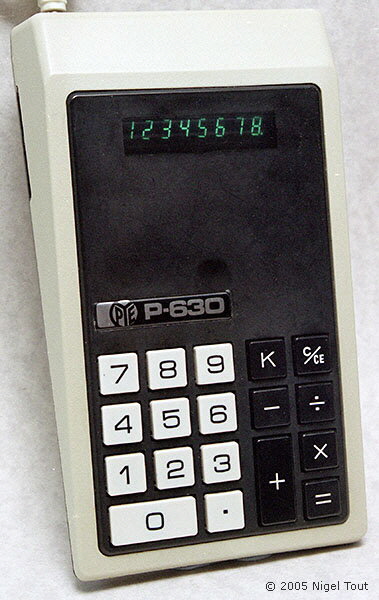
Pye P-630
6v (4x AA rechargeable batteries).
Display is 8 digits, green fluorescent, in a single tube.
4 functions.
88 x 160 x 39 mm. (3.5" x 6.3" x 1.5").
"Made for Pye in Malaysia".
Introduced in 1974.
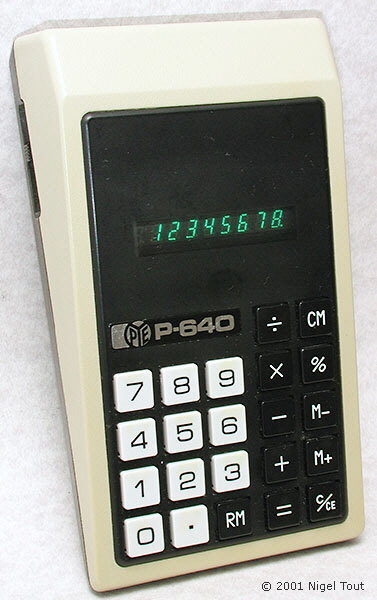
Pye P-640
6v (4x AA batteries).
Display is 8 digits, green fluorescent, in a single tube.
4 function, %, memory.
88 x 160 x 39 mm. (3.5" x 6.3" x 1.5").
"Made for Pye in Japan".
Introduced in 1974.
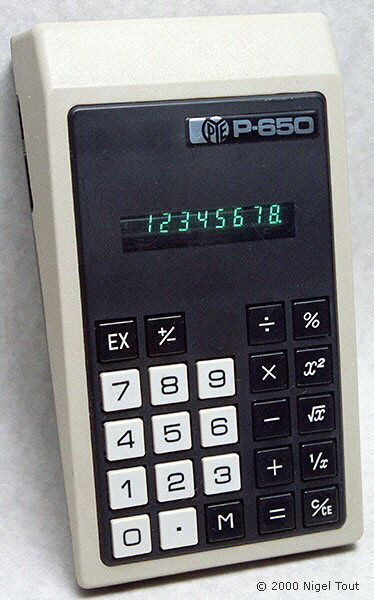
Pye P-650
6v (4x AA batteries).
Display is 8 digits, green fluorescent, in a single tube.
4 function, %, memory, square-root, square, reciprocal.
Integrated circuit: Rockwell A1241PA, here date coded 1974, week 38.
88 x 160 x 39 mm. (3.5" x 6.3" x 1.5").
"Made for Pye in Malaysia" - though the circuit board is marked "Made in Japan".
Introduced in 1974.
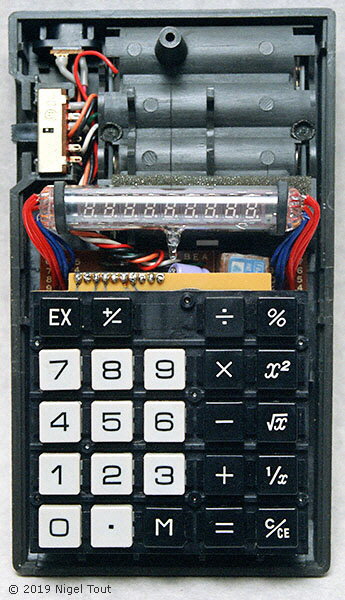
With the front cover removed the Vacuum Fluorescent Display (VFD) tube can be seen.
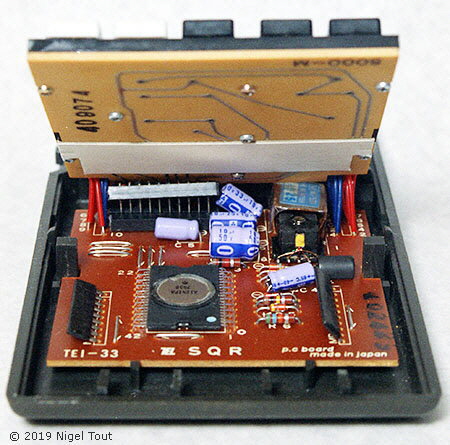
Underneath the keyboard is the main circuit board with the large Rockwell integrated circuit to the left of centre.
The Journal "Data Processing" of Nov/Dec 1974 announced:
"The calculator market is worth £35 million [US$81 million] a year and Pye Ltd., which is better known at the moment for its televisions and record players, is entering the market with the introduction of three calculators designed "to fit all the advantages of a desk-calculator into the pocket".
The calculators will be on sale in Pye's radio and television shops and the company is spending £100000 [US$230000] on a national advertising campaign to promote the product. John O'Neill, Pye's marketing director, commented: "We see the new range as a natural product evolution so far as Pye is concerned— and an obvious extension of a retailer's sales of electronic equipment. In cash terms, the total value of the calculator market will be considerably larger than that of radio."
The calculators will be sold with a mains adaptor/battery recharger and a carrying case. They feature typewriter size keys "manageable by even the most ham-fisted", a large display and "con-stant" and "clear last entry" keys.
The basic model, the 630. costs £35-60 [US$82]. The 640, which includes a memory store for sub-totals and a key for expressing answers as a percentage. costs £47-50 [US$109]. The 650 has five extra keys to give squares and square roots. reciprocals, exchange numbers and reverse plus or minus signs."
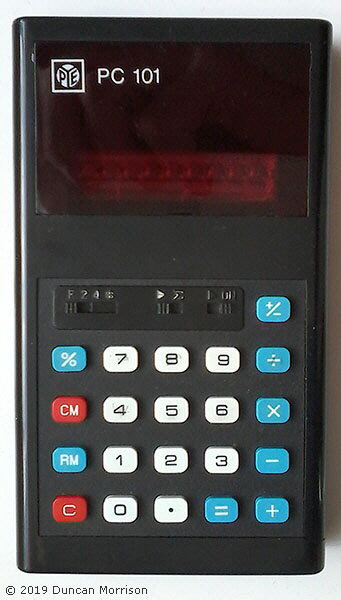
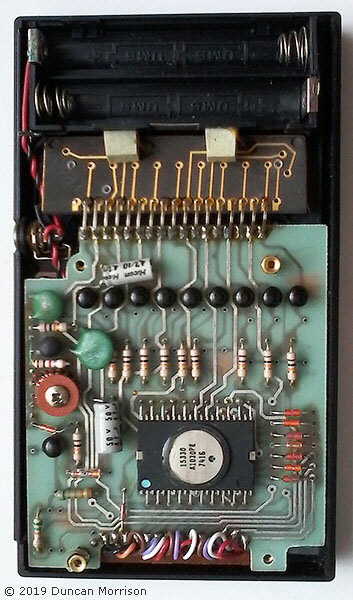
Pye PC 101
6v (4x N batteries).
Display is 8 digits red LED.
4 function, %, memory.
Integrated circuit: Rockwell A1030PE (here date coded 1974, week 16).
"Made Hong Kong exclusively for Pye".
Grateful thanks to Duncan Morrison, in Australia, for providing the photographs and information about this model which may have only been marketed in Australia.
In 1896 William George Pye had started a part-time business while employed as an instrument maker at the Cavendish Laboratory of Cambridge University. By 1914 W.G. Pye & Co. employed 40 people and manufactured a range of
instruments for teaching and research. After the end of the First World War it was a pioneer manufacturer in Britain of domestic radios, televisions in the 1930s, and transistor radios in the 1950s. As well as the
domestic products it was also very strong in industrial electronics and controls, and among its subsidiaries were the Pye recording company and the Newmarket Transistors semiconductor company.
However, it did not respond
adequately to the increasing Japanese competition in the late 1950s, 1960s and early 1970s, and got into difficulties. This resulted in 1966 in Philips buying a 60% shareholding in the company (limited by the government), and
buying the company completely in 1976.
For more information see the website "The Story of Pye, 1896 to 2019".
Pye was one of the later companies to decide that there was a profit to be made in pocket calculators. However, these were to be their only models, and like many other companies they soon left the calculator market as the prices and profits plummeted.
In fact, this was not Pye's first involvement with calculators. In 1961 the Block and Anderson company launched the "Bandatronic" £sd (Sterling currency) calculating typewriter system, which was manufactured by Pye. In this system up to 5 electric typewriters were connected to 1 electronic calculating unit for calculating totals, and applying discounts, for invoices. However it was stressed that this was not a general purpose calculator and "The machine is set up before delivery to perform the range of work specified by the customer. Each typewriter performs four programmes and the operator selects the one required by pressing a button ...". The cost was £15,000 to £18,000 [about US$45,000] (at 1961 prices !! - a family car was about £500).
References:
Vintage British Calculators
Text & photographs copyright, except where stated otherwise, © Nigel Tout 2000-2025.